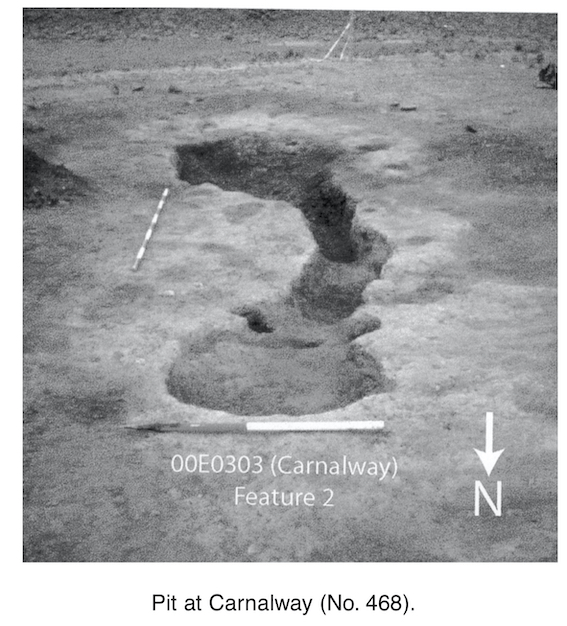2000:0468 - CARNALWAY, Kildare
County: Kildare
Site name: CARNALWAY
Sites and Monuments Record No.: N/A
Licence number: 00E0303
Author: Finola O’Carroll, Cultural Resource Development Services Ltd.
Author/Organisation Address: Campus Innovation Centre, Roebuck, UCD, Belfield, Dublin 4
Site type: Kiln - corn-drying
Period/Dating: Post Medieval (AD 1600-AD 1750)
ITM: E 686295m, N 712826m
Latitude, Longitude (decimal degrees): 53.158930, -6.709639
Four features had been identified during the course of monitoring carried out in advance of a quarry development at Brownstown/Carnalway, Kilcullen, Co. Kildare (Excavations 1999, 122, 99E0416). Two were deemed to be archaeologically significant, and both were excavated.
The larger of the two features proved to be a clay-cut drying kiln, most probably used to dry corn, although no remains of cereals were recovered. The second was a pit containing charcoal and soil deposits, which had been truncated by ploughing.
The kiln appeared as a cut in the natural sand subsoil, filled with a brown, sandy clay and measuring 6.32m by 1.68m in maximum extent. It consisted of two depressions linked by a channel. The larger, lower depression (1.6m x 3.4m) acted as the fire-bowl, joined to the channel or flue, which directed hot air to the northern depression or drying bowl (c. 1m diameter). A wooden structure, indicated by post-holes, probably covered the drying bowl. The flue may have been covered by sods.
The kiln went through at least two phases of use, indicated by a recutting of the fire-bowl through earlier ash deposits. After the kiln went out of use the cutting was backfilled in what appears to have been one action. The posts were also deliberately removed before rotting in situ. It appears that this kiln had a limited lifespan, perhaps a couple of seasons. Comparable sites, mostly lined with stone, have been found on medieval sites in Britain and Ireland and may even have been used up to the 19th century.
The second feature, located 22m south-east of the kiln, was a circular pit (0.67m x 0.62m, 0.12m deep) containing two fills. The uppermost consisted of a discrete circular deposit of mottled brown, burnt soil with charcoal flecks (0.28m x 0.18m, 0.12m deep). The second, which was a mid-brown, sandy, silty soil with charcoal flecks, constituted the remainder of the fill of the pit (0.38m x 0.63m, 0.12m deep). The pit was truncated and disturbed by later ploughing.
No datable or diagnostic finds were recovered from either feature. A piece of prehistoric waste flint was found in the kiln, but it appears to have been redeposited along with a brown, sandy clay, which was used to backfill the kiln after it had gone out of use. A sherd of post-medieval pottery found adjacent to the kiln, lying on the surface of the natural, was also disturbed. Charcoal and bone samples were recovered from the fills of both features for radiocarbon dating.

